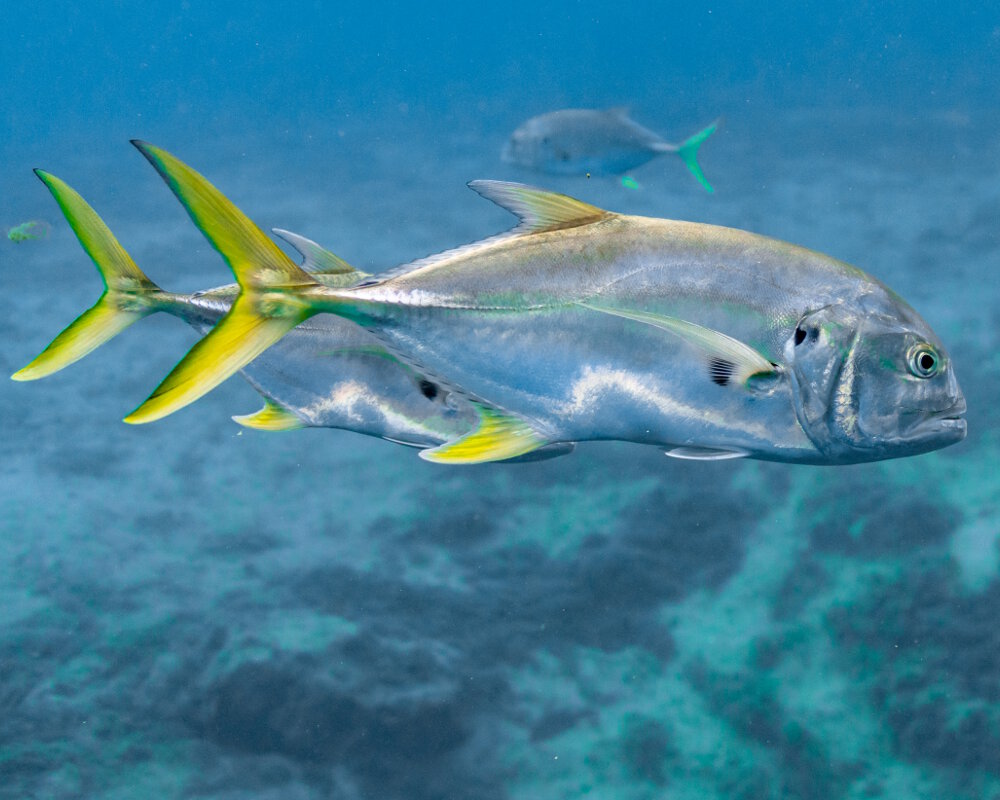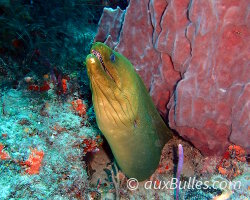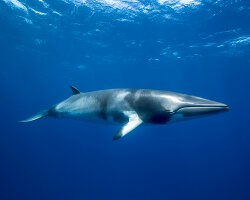Sealife guideThe crevalle jackCaranx hippos
Last updated on 02/12/2025 at 11:05 PM
Taxonomy
- Common name: Crevalle jack, common jack
- French name: Carangue crevalle
- Spanish name: Jurel común
- Scientific name: Caranx hippos (Linnaeus, 1766)
- Family name: Carangidae
- Order name: Carangiformes
- Class name: Actinopterygii
Description
The crevalle jack is distinguished by its elongated and streamlined body, adapted for fast swimming in the water. Its head is relatively large with a bulging forehead, and its mouth is equipped with sharp teeth, characteristic of carnivorous fish.
The body of this species is generally silver with a golden or bluish tint and features smooth scales that give it a hydrodynamic shape. Its dorsal and anal fins are yellow, as is its tail. A black stripe borders the back of its tail, while a black spot marks the rear base of its pectoral fins and the tip of the gills, at the level of the eye.
The crevalle jack typically measures 30 inches in length, although some individuals can reach up to 47 inches.
Range
The crevalle jack is a species of fish widely distributed in the tropical and subtropical waters of the Atlantic Ocean. It inhabits the eastern part of the Atlantic Ocean, from Portugal to Angola, including the western part of the Mediterranean Sea, as well as the western part of the Atlantic, from Nova Scotia, Canada, and the northern Gulf of Mexico, down to Uruguay, passing through the Greater Antilles. However, this species is absent from the eastern Lesser Antilles.
Habitat
The crevalle jack frequents both shallow coastal waters and deeper pelagic zones offshore and can be found at depths of up to 1,150 feet. However, typically, this depth ranges from the surface to 656 feet.
Diet
The crevalle jack is an opportunistic carnivorous fish that primarily feeds on small fish, cephalopods like cuttlefish and squids, and crustaceans.
The crevalle jack is an active predator that uses its speed and ability to maneuver quickly to destabilize and capture its prey by surprise.
The crevalle jack lives in small groups of just a few individuals however, larger individuals may be solitary.
Reproduction
The crevalle jack is an oviparous fish species, and its reproduction occurs exclusively in the open sea in the subtropical Straits of Florida and the tropical Caribbean, where adults migrate to spawn.
Did you know ?
One of the most remarkable features of the crevalle jack is its crescent-shaped tail fin, which allows it to reach impressive speeds when hunting.
The crevalle jack is known for being a formidable predator, both fast and agile.
Due to its combative nature and speed, the crevalle jack is popular among sport fishing enthusiasts.
The crevalle jack is listed as many other marine species within The
IUCN Red List of threatened species. The crevalle jack appears in the
IUCN Red List since 2019 within the category Least Concern !
Within the same genus
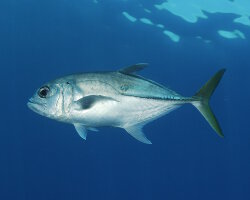
Bigeye trevally
(Caranx sexfasciatus)
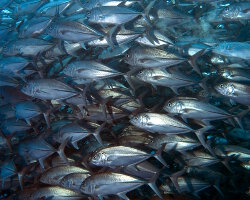
Giant trevally
(Caranx ignobilis)
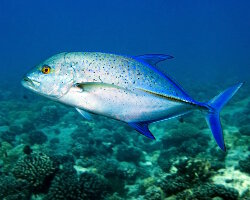
Bluefin trevally
(Caranx melampygus)
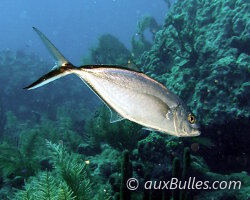
Bar jack
(Caranx ruber)
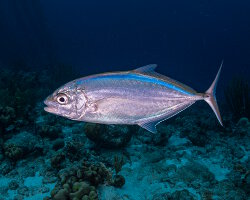
Blue runner
(Caranx crysos)
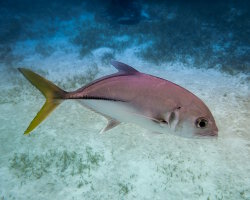
Horse-eye jack
(Caranx latus)
Within the same family
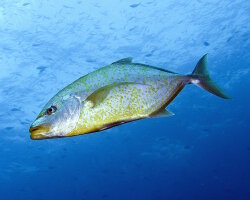
Orangespotted trevally
(Carangoides bajad)
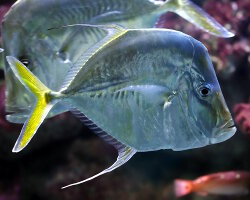
Lookdown
(Selene vomer)
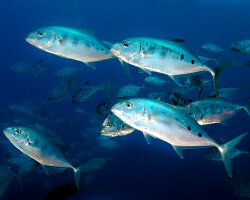
Yellowspotted trevally
(Carangoides fulvoguttatus)
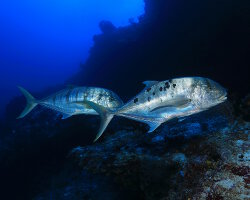
Golden trevally
(Gnathanodon speciosus)
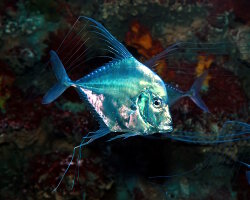
Indian threadfish
(Alectis indica)
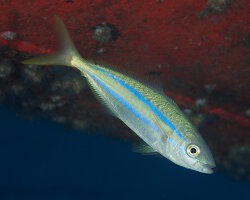
Rainbow runner
(Elagatis bipinnulata)
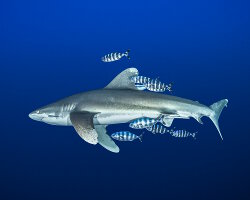
Rudderfish
(Naucrates ductor)
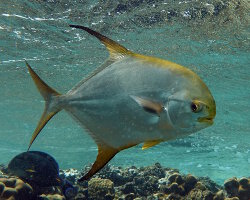
Snubnose pompano
(Trachinotus blochii)
Explore also

Bonefish
(Albula vulpes)
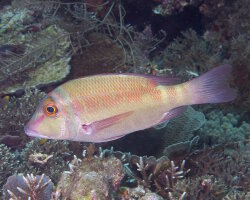
Longfin emperor
(Lethrinus erythropterus)

Blackeye goby
(Rhinogobiops nicholsii)
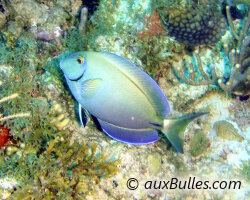
Ocean tang
(Acanthurus bahianus)

Singular bannerfish
(Heniochus singularius)
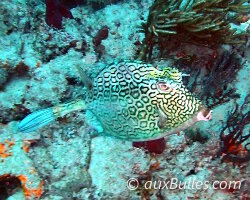
Honeycomb cowfish
(Acanthostracion polygonium)

Sand diver
(Synodus intermedius)
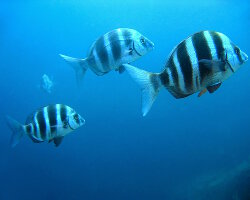
Zebra seabream
(Diplodus cervinus)
The marine species from Atlantic ocean
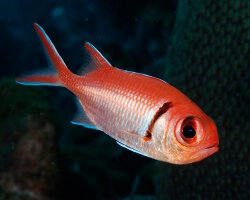
Blackbar soldierfish
(Myripristis jacobus)
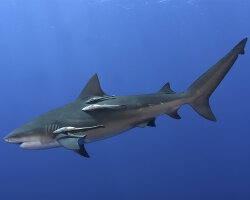
Bull shark
(Carcharhinus leucas)
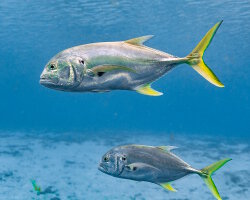
Crevalle jack
(Caranx hippos)
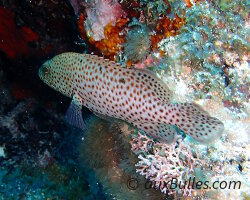
Graysby
(Cephalopholis cruentata)

King penguin
(Aptenodytes patagonicus)

Pederson cleaner shrimp
(Ancylomenes pedersoni)
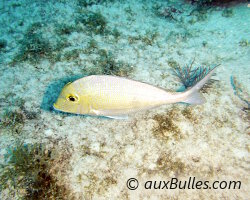
Saucereye porgy
(Calamus calamus)
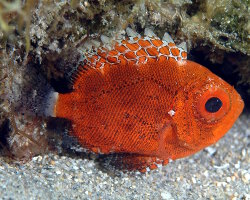
Short bigeye
(Pristigenys alta)
Dive centers
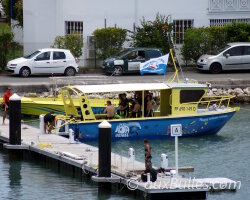
Noa dive center










